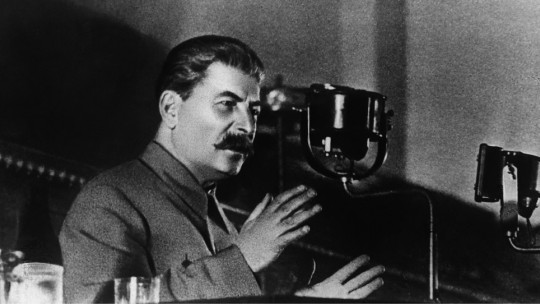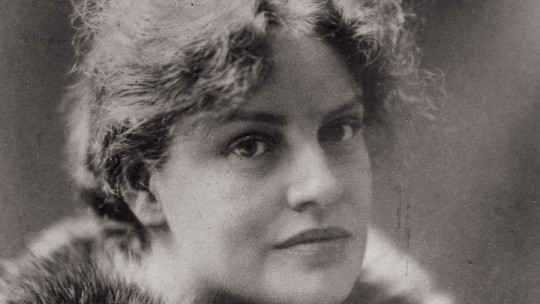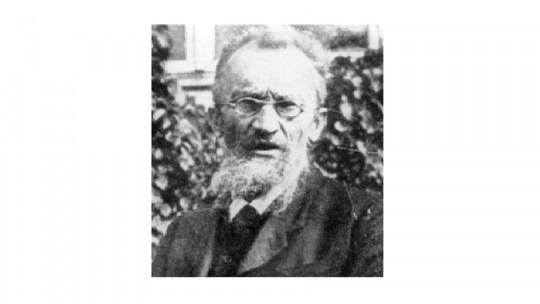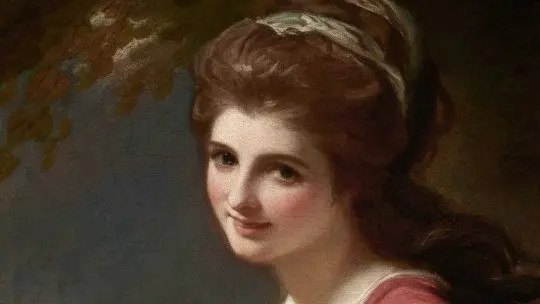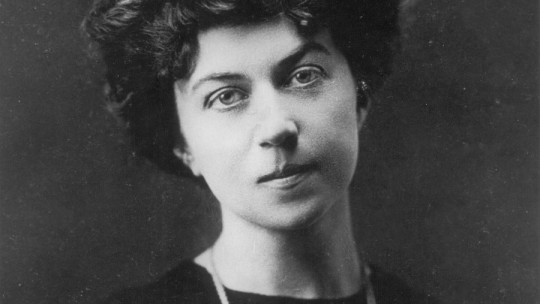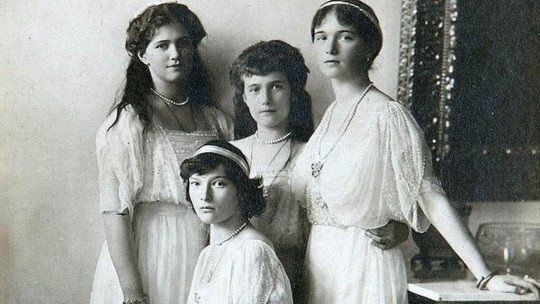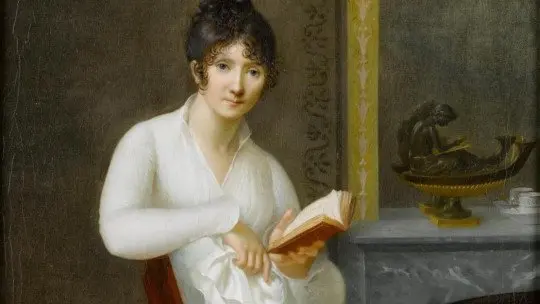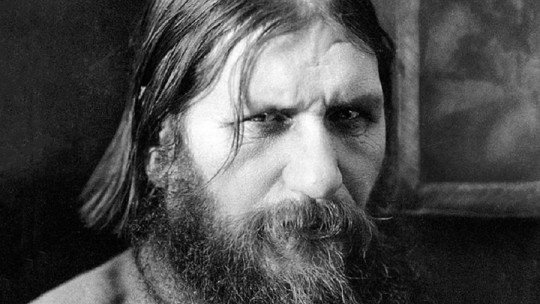
Her icy gaze petrified everyone who encountered her. The magnetic force of her eyes was unmatched; At least, that’s what her contemporaries said. Certainly, if we take any of the photographs that we have left of him, we will still notice that strength. Rasputin is no longer with us, but his spell lives on.
Who was Grigori Rasputin? Why did he have that power over people? What did the Tsars of Russia see in him that made him their close friend? Why was he so attractive to ladies, when his hygiene was poor?
In this biography of Rasputin you will find a summary of the life of one of the great mysteries of history Even today, scholars are unable to fill in certain gaps in his biography, and not only in terms of facts. For example, the question remains as to why he, a simple Siberian peasant, was the only one capable of mitigating the hemorrhages that hemophilia caused in the Tsarevich. Rasputin remains, even today, a true enigma.
Biography of Grigori Efímovich Rasputin, “the Depraved”
That would be, if we accept the etymology proposed by many philologists, the true meaning of Rasputin’s surname (which would come, according to this theory, from the Russian word rasputnyi, “dissolute”). True or not, the truth is that the surname suited him like a glove, if we stick to his biography and, above all, his legend.
Because a character as fascinating as Rasputin, a generator of hatred and admiration in equal parts, could not be left out of the myth. There is a lot of invention in his life and, although the real character does not come across very well, It is difficult to discern the real Rasputin from the image his detractors dedicated themselves to creating
The poor peasant of Siberia
Rasputin’s origins date back to a small village in deep Siberia called Pokrovskoye, in the Tobolsk region. His leading biographers give the most probable date of his birth as January 21 (January 9 in the Julian calendar), 1869; At least one entry from the town’s parish records his baptism the next day, January 10. In Pokrovskoye he spent his entire childhood and part of his youth, he married Praskovia Fyodorovna Dubrovina and had several children, among them, Matriona (Maria) Raspútina, who would later write an interesting biography of his father.
Rasputin was born and raised in a humble family of illiterate peasants and, in fact, he barely learned to write as an adult. In reality, we know little about the character’s first years of life, and what is known is due, in large part, to the hoaxes that spread around Saint Petersburg as his detractors grew. So what is true in all of this?
Much has been said about the rugged adolescence of Rasputin, who was said to have been a horse thief, very quarrelsome and a lover of partying, women and alcohol. The truth is that, and according to Douglas Smith in his interesting book Rasputin: Faith, power and the twilight of the Romanovs (see bibliography), there are statements from some residents of Pokrovskoye who testified for a report by the Tyumen Gendarmerie, and who assured that young Rasputin was a lover of small vices and, certainly, carried out some theft or another.
In any case, at the age of twenty-eight our protagonist leaves the town (some say forced into exile by his scandalized countrymen) and begins his long pilgrimage.
In search of God
It is unknown if Rasputin left Pokrovksoye spurred by his desire to know God (as he later acknowledged) or if, on the contrary, he fled the punishment imposed for one of his crimes. In any case, In the 1890s we find him on a pilgrimage through Russia and some sources even claim that it reached the Holy Land.
Around 1892 he entered a monastery in Verkhoturie, in the central Urals, where he learned to read through the Holy Scriptures and the texts of the Church fathers. However, as those who tried to make him a good monk recognized, the young man from Pokrovksoye was a hopeless case, as they considered him too crude to penetrate the mysteries of God.
Nonetheless, It was in Verkhoturie that Rasputin met Makari, the starets or holy old man who had his abode in the forests that surrounded the monastery. The starets They were the old people who traveled through Russia and who, according to the people, were touched by the grace of God, who had given them the gift of wisdom and spiritual leadership. Later, when Rasputin arrives in Saint Petersburg, he will be considered as such by a crowd thirsty for morbidity, mysteries and illuminations.
The sect of the “flagellants”
But for now, Grigori Efimovich Rasputin is just another pilgrim of all those who arrive en masse at the monastery, one of the most revered places in Russia. It seems that the monastic environment does not satisfy him; partly because of this and partly inspired by Makari, he soon leaves Verjoturie to pursue a freer life more in line with his rebellious and restless nature.
It is in those years of searching that the wandering peasant enters a well-known and feared sect, the jlystý or “flagellants”, a religious group that split from official Russian Orthodoxy in the 17th century. According to the doctrine of the sect, God is found in every human being, since Christ is continually reincarnated; In this way, the only way to reach God is to have intimate contact with the members of the group.
The “flagellants” also preached that true enlightenment is only achieved after having sinned excessively, because after that the pain of repentance is greater and, therefore, the ascent to forgiveness and redemption is better. Thus, in the clandestine meetings of the “flagellants” enormous orgies were held where there was no shortage of food, wine or sex, and in which, of course, The Depraved.
All this leads us to a question: who, really, was Rasputin? The “dissolute” who allowed himself to be carried away by a persecuted sect that based its rites on sex and violence, or the pilgrim who solicitously approached the starets Makari and learned from his humility and renunciation?
The first cure
Rasputin arrives in Saint Petersburg on Easter 1903. The religious circles of the capital are delighted with this young ascetic, who comes recommended to them by the ecclesiastical dignitaries of the city of Kazan, where Rasputin has passed on his pilgrimage. The simple presence of that illiterate peasant seemed to embody the ideal of a primitive and pure Church close to the humble, which many of the leaders wanted to recover.
Thus, the poor peasant from Pokrovksoye manages to enter the most important ecclesiastical circles of Saint Petersburg and, from them, access the salons of the aristocrats. From there to meeting the imperial family is just one step.
The meeting finally took place in 1905, when, through the princesses of Montenegro, Rasputin had tea one afternoon in the company of the tsars. Nicolás is deeply impressed by the saint, to the point of writing down his impressions in his personal diary For her part, Alejandra believes she sees in him the savior that she has been waiting for so long, and that she already thought she saw in the figure of Nizier Anthelme Philippe, an “enlightened one” who had promised her the birth of a son.
The first male of the tsars and heir to the Russian throne, Alexei, had been born in August 1904 to the great joy of his parents. The promise of the first “friend” of the family had been fulfilled, but there was a setback: the child had come into the world with the terrible disease of hemophilia. Alejandra, worried about the health and life of her little girl, and feeling terribly guilty for having transmitted the disease to her (hemophilia is only passed from mothers to sons), had closed herself off in herself and in her faith, forgetting for complete of the world.
In 1907, Rasputin is urgently summoned to the palace: Alexei has had a fall which has caused a very serious hemorrhage. For a hemophiliac, this can mean death, so the tsars pray day and night at the child’s bed, imploring his salvation. When Rasputin arrives, he places himself at the foot of the bed, places his hands on the tsarevich’s little body and begins to pray. Nothing else. The next day, Alexei feels fine and the crisis has passed.
The power in your hands
Many rivers of ink have flowed trying to decipher what procedure Rasputin used to alleviate the child’s pain and save him from his hemorrhagic crises. Hypnosis, perhaps? Did Rasputin know the secrets of healing through the laying on of hands? Any scientific explanation runs counter to the evidence, and the fact is that, be that as it may, and faced with a hemophilic crisis, the tsarevich was only cured thanks to Rasputin.
From then on, the starets became the friend of the tsars and their most intimate confidant. At least, in the case of Alejandra, she referred to him as “our dear friend” in the letters she sent to her husband. Little by little, Rasputin’s star began to rise, and nothing was done or undone at court without him being aware

But, despite the monk’s undoubted influence on Alexandra’s will, historians are not so sure that Rasputin had the same effect on the tsar. Many believe that Nicholas “put up with” the saint because only through him was the tsarevich’s health guaranteed. How can we blame parents tormented by their son’s agony…? And yet, while Alexandra and Nicolás remained attentive to the child’s illness, Russia fell into the abyss.
An unusual death
Rasputin had as many friends as enemies. The ladies of the aristocracy loved him at their parties and their soirées, and it was even rumored that many of them did not dislike his disheveled and smelly appearance when it came to sleeping with him. There is also an excess of rumors on this topic (he was even accused of being the Tsarina’s lover, which is not true), but it cannot be denied that Rasputin frequented brothels and was a great lover of partying and partying. drunkenness
Slowly, the conspiracy to put an end to this annoying character who exercised so much power over the tsars began to take shape. On the night of December 29, 1916 (December 16 according to the Julian calendar), Prince Felix Yusupov hosted a party at his palace on the banks of the Neva. She invited Rasputin, who came with pleasure, because he wanted to meet Irina, Felix’s wife, who was reputed to be one of the most beautiful women in Saint Petersburg. Among the conspirators were, in addition to Yusupov, Vladimir Purishevich, a deputy of the Duma, and Grand Duke Dimitri Pavlovich.
The conspirators They tried to kill Rasputin with cyanide-doused cakes, but as the night wore on they watched in horror as the starets I ate and drank without succumbing Drunk, Rasputin was beginning to lose patience. Where was Irina? Nervous, one of the congregants went to look for his pistol and shot the monk without too much thought. Rasputin fell to the ground, apparently dead.
The conspirators closed the door, but returned later for the body. Upon entering, they had time to see Rasputin escaping through the garden. He was still alive! Maddened, they fired three more shots, finally knocking him to the snowy ground. It seems that Purishevich, fearful that he was still alive, finished him off with a shot to the head. The killers then wrapped the body and threw it into a hole in the frozen Neva River. When the body was discovered days later, it was found that Rasputin had not died from the gunshots, nor of course from the poison ; He was still alive when they disposed of his body, and death finally occurred by drowning. An unusual death for a character who had nothing in common.
British conspiracy rumors
Until not long ago, historians accepted the Russian conspiracy theory that sought to destroy the annoying “friend” of the tsars. However, Lately, evidence has been found that points to the British Secret Intelligence Service (BSIS) as the architect of the murder
It seems that the British lawyer Oswall Rayner went to the Yusupov palace repeatedly between October and November 1916, and was also there the day after the murder. Strange coincidences, which become even more curious if you take into account that one of Rasputin’s wounds was inflicted with a weapon used by the BSIS. On the other hand, in January 1917 the English agent Stephen Alley sent a telegram to another agent, John Scale, in which it was stated that, although “things” had not turned out as planned, the objective had been achieved. . And what objective was that? Again according to the telegram, nothing less than the disappearance of “the dark forces.” Were they referring to Rasputin?
What reasons did the British Secret Intelligence Service have for eliminating Rasputin? Can we believe the testimony of Felix Yusupov? What was the consequence of the disappearance of the starets?
This last question is the only one that can be answered. Because the death of Grigori Rasputin only heated up an already sufficiently charged atmosphere; A few months later the revolution began that would dethrone the tsar and lead his family to death Rasputin already said it shortly before his death (if we are to believe, again, the legend): if he died at the hands of members of the imperial family, the tsars and his children would not survive him. Irina, Yusupov’s wife, was Nicholas’s niece, and Dimitri Pavlovich was his cousin.

